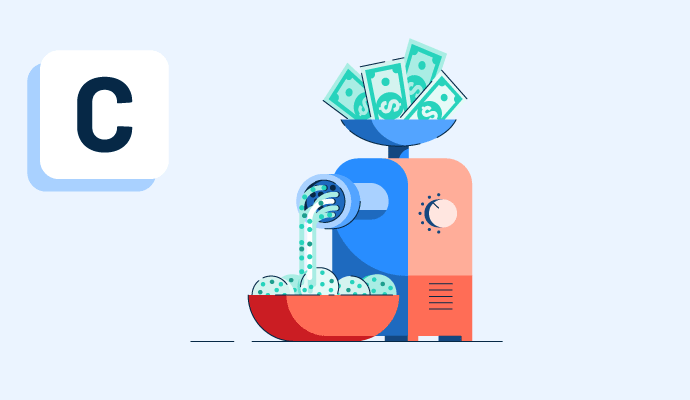What is click fraud?
Click fraud is a type of fraud that occurs when an individual, computer program, or script repeatedly clicks on a pay-per-click (PPC) advertisement. Illegitimate clicks without genuine interest or the intention to purchase raise ad costs for networks and publishers. In most cases, people commit click fraud to reduce competition among similar advertisers or to generate revenue by cheating the system.
Advertisers use click fraud software to detect and safeguard against fraudulence in PPC advertising. These tools provide data and offer dashboards to warn of fraudulent activity and monitor ad fraud.
How does click fraud work?
In a pay-per-click advertising model, advertisers pay publishers for clicks on their ads. PPC ads appear on search engines, social media sites, or websites. The price-per-click is determined based on factors such as budget, bid, and performance.
Advertisers find publishers through various networks, seeking publishers relevant to the advertiser’s target audience. Advertisers expect clicks from audience members interested in their product or service. However, when click fraud happens, artificial or fake clicks on ads skew traffic results and increase the number of clicks that don’t represent a genuine interest in the product or service. Different types of click fraud take place for various reasons.
Who commits click fraud?
Two types of people are typically behind click fraud.
- Industry competitors: Since click fraud drains marketing budgets, it’s common for competitors to commit click fraud in an attempt to elevate their business. Competitors may use various methods, such as leveraging internal employees, to commit click fraud to sabotage a competitor’s business.
- Publishers and affiliates: In this case, publishers and affiliates sabotage PPC campaigns to receive larger payouts. The scammers work the system to get as much money as possible and use a combination of real and simulated clicks to avoid getting caught.
Ways to commit click fraud
The most common methods of committing click fraud involve the following:
- Crowdsourcing. When a site publisher attracts visitors and asks them to click on specific ads, they’re crowdsourcing potential click fraud. When visitors click on the advertisements, publishers often receive money from the clicks even though the visitors may have no interest in the product or service in the ad.
- Click farm. At a click farm, individuals receive payment for clicking on advertisements all day. A site publisher may enlist the help of a click farm to increase their income by having the farm click through ads on their site. On the flip side, companies could employ click farms to click on competitors’ ads and deplete their advertising budget quickly.
- Bot networks. For this technique, bots run malicious attacks on publishers’ websites and generate fake clicks on advertisements. Bots may generate a high number of clicks per minute depending on how they’re set up.
How to identify click fraud
Businesses can spot click fraud across their PPC campaigns using several methods. Below are some easy ways to identify click fraud.
- Watch for ad impressions and the number of clicks: Unexplained spikes in impression and click data could result from click fraud. Marketers should review campaign data frequently to spot weird activity as soon as possible.
- Check conversion rates: Unusual conversion rates may indicate dishonest activity. Marketing teams can compare conversion rates against previous campaigns to identify rates outside of typical trends.
- Examine bounce rates: High bounce rates can signal a high level of click fraud, as bots or fraudulent clickers don’t typically browse around the site the way an interested user does. Employ analytics platforms to examine bounce rates.
- Review click-through rates (CTR): Generally speaking, more malicious clickers lead to higher CTRs. While this metric is not always a good indicator, reviewing CTR and other metrics helps marketers identify click fraud.
How to prevent click fraud
Advertisers prevent click fraud by using appropriate tools and following general best practices.
- Ad verification insights. Businesses can invest in ad verification tools that provide advertisers with performance data for various metrics, including invalid traffic. Ad verification tools identify low-quality publishers and suspicious websites to avoid PPC ad fraud.
- Use of honeypots. A honeypot is a security mechanism that detects and deflects click bots and other malicious networks. Honeypots expose bots and offer valuable information about IP addresses that businesses should consider blocking.
- Adjusted targeting. Advertisers should monitor click fraud episodes closely and pay attention to patterns across ad content leading to fraud. Upon strategic review and examination, advertisers may need to readjust their targeting toward specific audience segments to prevent further fraudulent activity.
Ready to purchase ad inventory and track ads? Try advertiser campaign management software.

Alyssa Towns
Alyssa Towns works in communications and change management and is a freelance writer for G2. She mainly writes SaaS, productivity, and career-adjacent content. In her spare time, Alyssa is either enjoying a new restaurant with her husband, playing with her Bengal cats Yeti and Yowie, adventuring outdoors, or reading a book from her TBR list.




















